
Saturday, December 13, 2008
Dorset and Durdle Door
The Jurassic Coast is a World Heritage Site on the English Channel coast of southern England. The site stretches from Orcombe Point near Exmouth in East Devon to Old Harry Rocks near Swanage in East Dorset, a distance of 153 kilometres (95 mi).[1] Chartered in 2001, the Jurassic coast was the second wholly-natural World Heritage Site to be designated in the United Kingdom.


Saturday, September 13, 2008
Eye
The London Eye, also known as the Millennium Wheel, is the tallest (135 metres (443 ft)) Ferris wheel in Europe, and has become the most popular paid tourist attraction in the United Kingdom, visited by over 3 million people a year. At the time it was erected it was the tallest Ferris wheel in the world, until it was surpassed by the Star of Nanchang (160m) in May 2006, and then the Singapore Flyer (165m) on February 11, 2008. However, it is still described as "the world's tallest cantilevered observation wheel" (because the entire structure is supported by an A-frame on one side only) by its operators.
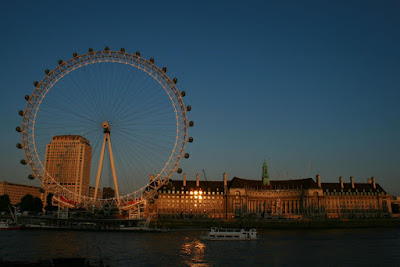
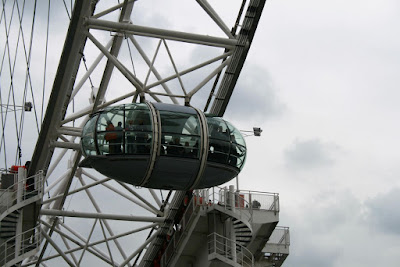
Wednesday, September 3, 2008
Antirrhinum Majus
Antirrhinum majus is a species of Antirrhinum native to the Mediterranean region, from Morocco and Portugal north to southern France, and east to Turkey and Syria. The common name derives from the flowers which, when squeezed, open their "mouths". The plants are pollinated by bumblebees, and the flowers close over the insects when they enter and deposit pollen on their bodies.
Source : Wiki
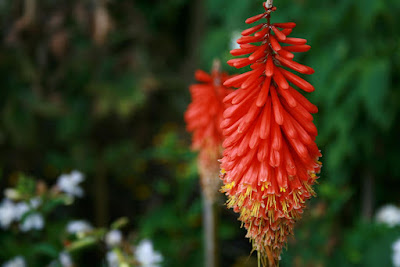
Source : Wiki
St John's College, Cambridge
St John's College is a constituent college of the University of Cambridge founded by Lady Margaret Beaufort in 1511. It is geographically one of the largest colleges of the University of Cambridge, and the third largest in terms of its membership. It is the second richest of all the Oxbridge colleges, with fixed assets of £504,109,000 and an annual income from endowments estimated at £7,000,000. Eight Nobel Prizes have been awarded to members of St John's. The college is also known for its famous choir.
The college was founded on the site of the 13th century Hospital of St John in Cambridge at the suggestion of Saint John Fisher, Bishop of Rochester and chaplain to Lady Margaret. However, Lady Margaret died without having mentioned the foundation of St John's in her will, and it was largely the work of Fisher that ensured that the college was founded. He had to obtain the approval of King Henry VIII of England, the Pope through the intermediary Polydore Vergil, and the Bishop of Ely to suppress the religious hospital and convert it to a college. The college received its charter on April 9, 1511. Further complications arose in obtaining money from the estate of Lady Margaret to pay for the foundation and it was not until October 22, 1512 that a codicil was obtained in the court of the Archbishop of Canterbury. In November 1512 the Court of Chancery allowed Lady Margaret's executors to pay for the foundation of the college from her estates.
Source : Wiki
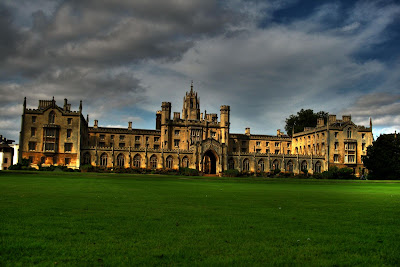
The college was founded on the site of the 13th century Hospital of St John in Cambridge at the suggestion of Saint John Fisher, Bishop of Rochester and chaplain to Lady Margaret. However, Lady Margaret died without having mentioned the foundation of St John's in her will, and it was largely the work of Fisher that ensured that the college was founded. He had to obtain the approval of King Henry VIII of England, the Pope through the intermediary Polydore Vergil, and the Bishop of Ely to suppress the religious hospital and convert it to a college. The college received its charter on April 9, 1511. Further complications arose in obtaining money from the estate of Lady Margaret to pay for the foundation and it was not until October 22, 1512 that a codicil was obtained in the court of the Archbishop of Canterbury. In November 1512 the Court of Chancery allowed Lady Margaret's executors to pay for the foundation of the college from her estates.
Source : Wiki

Tuesday, June 10, 2008
Brighton
Brighton is located on the south coast of England, and together with its immediate neighbour Hove forms the city of Brighton and Hove. The arrival of the railway in 1841 brought Brighton within the reach of day-trippers from London.
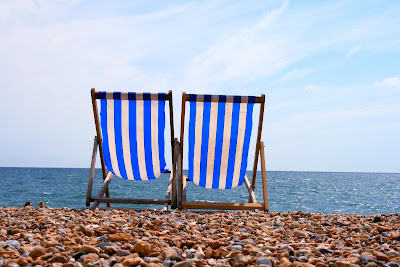

Tuesday, April 29, 2008
Penguin - Colchester Zoo
Colchester Zoo in Essex, England has some of the best big cat and primate collections in Europe. Colchester Zoo is supported by a charitable organisation called Action For The Wild. The charity is dedicated to assisting conservation projects worldwide through the provision of both financial and technical assistance

Thursday, April 17, 2008
Tulip or Tulipa
The tulip is actually not a Dutch flower as many people tend to believe.
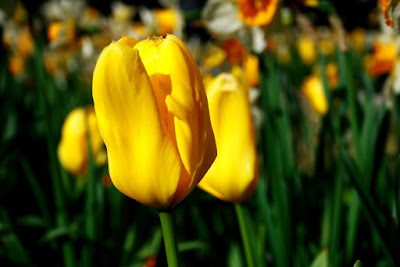
The tulip, or "Lale" as it is called in Turkey, is a flower indigenous to Iran, Afghanistan, Turkey and other parts of Central Asia. A Dutch ambassador in Turkey in the 16th century, who was also a great floral enthusiast, Ogier Ghiselin de Busbecq, got their very names because of their Persian origins. Tulips were brought to Europe in the 16th century; the word tulip, which earlier in English appeared in such forms as tulipa or tulipant, entered the language by way of French tulipe and its obsolete form tulipan or by way of Modern Latin tulīpa, from Ottoman Turkish tülbend, "muslin, gauze." The Turkish word for gauze, with which turbans can be wrapped, seems to have been used for the flower because a fully opened tulip was thought to resemble a turban.
source : Wikipedia
The tulip, or "Lale" as it is called in Turkey, is a flower indigenous to Iran, Afghanistan, Turkey and other parts of Central Asia. A Dutch ambassador in Turkey in the 16th century, who was also a great floral enthusiast, Ogier Ghiselin de Busbecq, got their very names because of their Persian origins. Tulips were brought to Europe in the 16th century; the word tulip, which earlier in English appeared in such forms as tulipa or tulipant, entered the language by way of French tulipe and its obsolete form tulipan or by way of Modern Latin tulīpa, from Ottoman Turkish tülbend, "muslin, gauze." The Turkish word for gauze, with which turbans can be wrapped, seems to have been used for the flower because a fully opened tulip was thought to resemble a turban.
source : Wikipedia
Saturday, April 12, 2008
Spring
Spring begins on the 21st of March and lasts until 20th of June in the northern hemisphere. The northern hemisphere begins to warm significantly causing new plant growth to "spring forth," giving the season its name.

The first day of spring is the beginning of the new year, Nowruz, in the Iranian calendar. Most flowering plants bloom this time of year, in a long succession sometimes beginning even when snow is still on the ground, and continuing into early summer.
source : Wikipedia
The first day of spring is the beginning of the new year, Nowruz, in the Iranian calendar. Most flowering plants bloom this time of year, in a long succession sometimes beginning even when snow is still on the ground, and continuing into early summer.
source : Wikipedia
Tuesday, April 8, 2008
Southwark Bridge
Southwark Bridge is an arch bridge for traffic linking Southwark and the City across the River Thames, in London, England. The bridge is sometimes nicknamed the "car park bridge" as coach drivers use it to park their vehicles.


Labels:
Bridge,
Canon 400D,
London,
Night Shot,
Sky,
Thames
Street Light

The first street in the world to be lit by electric light was Mosley Street, in Newcastle-upon-Tyne. The street was lit by Joseph Swan's incandescent lamp in February, 1879. Wabash, Indiana holds the title of being the second electrically-lit city in the world, which took place on February 2, 1880. Four 3,000 candlepower Brush arc lamps suspended over the courthouse rendered the town square "as light as midday." Kimberley, a city in the centre of South Africa, was the first city in Africa to have electric street lights - first lit on 1 September 1882. Timişoara, in present-day Romania, was the first city in mainland Europe to have electric public lighting on the 12th of November 1884. 731 lamps were used.
St Katharines Dock Dial - Sun Dial
This is a large equinoctial sundial in the form of a massive, 3.66 metres, stainless steel ring supported by three rigid chain link cables. The dial was designed by Wendy Taylor in 1973 and delineated by Christopher St J Daniels

The distinguishing characteristic of the equatorial dial (also called the equinoctial dial) is the planar surface that receives the shadow, which is exactly perpendicular to the gnomon's style.[8] This plane is called equatorial, because it is parallel to the equator of the Earth and of the celestial sphere. If the gnomon is fixed and aligned with the Earth's rotational axis, the sun's apparent rotation about the Earth casts a uniformly rotating sheet of shadow from the gnomon; this produces a uniformly rotating line of shadow on the equatorial plane. Since the sun rotates 360° in 24 hours, the hour-lines on an equatorial dial are all spaced 15° apart (360/24). The uniformity of their spacing makes this type of sundial easy to construct. Both sides of the equatorial dial must be marked, since the shadow will be cast from below in winter and from above in summer.
source : Wikipedia

The distinguishing characteristic of the equatorial dial (also called the equinoctial dial) is the planar surface that receives the shadow, which is exactly perpendicular to the gnomon's style.[8] This plane is called equatorial, because it is parallel to the equator of the Earth and of the celestial sphere. If the gnomon is fixed and aligned with the Earth's rotational axis, the sun's apparent rotation about the Earth casts a uniformly rotating sheet of shadow from the gnomon; this produces a uniformly rotating line of shadow on the equatorial plane. Since the sun rotates 360° in 24 hours, the hour-lines on an equatorial dial are all spaced 15° apart (360/24). The uniformity of their spacing makes this type of sundial easy to construct. Both sides of the equatorial dial must be marked, since the shadow will be cast from below in winter and from above in summer.
source : Wikipedia
Friday, March 28, 2008
Trafalgar Square
Trafalgar Square is a square in London, England that commemorates the Battle of Trafalgar (1805), a British naval victory of the Napoleonic Wars. The original name was to have been "King William the Fourth's Square", but George Ledwell Taylor suggested the name "Trafalgar Square".
source : Wikipedia

source : Wikipedia

Tower Bridge and Town Hall
City Hall is the headquarters of the Greater London Authority and the Mayor of London. It stands on the south bank of the River Thames near Tower Bridge. Designed by Norman Foster, it opened in July 2002.
The building has an unusual bulbous shape, intended to reduce its surface area and thus improve energy efficiency. It has been compared variously to Darth Vader's helmet, a misshapen egg, a human scrotum, a woodlouse or a motorcycle helmet. Mayor Ken Livingstone referred to it as a "glass testicle"[1][2]. Its designers reportedly saw the building as a giant sphere hanging over the Thames, but opted for a more conventionally rooted building instead. It has no front or back on conventional terms but derives its shape from a modified sphere.
source : Wikipedia

The building has an unusual bulbous shape, intended to reduce its surface area and thus improve energy efficiency. It has been compared variously to Darth Vader's helmet, a misshapen egg, a human scrotum, a woodlouse or a motorcycle helmet. Mayor Ken Livingstone referred to it as a "glass testicle"[1][2]. Its designers reportedly saw the building as a giant sphere hanging over the Thames, but opted for a more conventionally rooted building instead. It has no front or back on conventional terms but derives its shape from a modified sphere.
source : Wikipedia

Labels:
Bridge,
Building,
Canon 400D,
London,
Night Shot,
Tower Bridge,
Town Hall
London Bridge
A bridge has existed at or near the present site for nearly 2,000 years. The first bridge across the Thames in the London area was built of wood by the Romans on the present site around 50 AD.
London's original bridge made this one of the most famous bridge emplacements in the world. It was the only bridge over the Thames in London until Westminster Bridge was opened in 1750.
source : Wikipedia

London's original bridge made this one of the most famous bridge emplacements in the world. It was the only bridge over the Thames in London until Westminster Bridge was opened in 1750.
source : Wikipedia

Labels:
Bridge,
Building,
Canon 400D,
London,
London Bridge,
River,
Thames
Tower Bridge
Tower Bridge is a combined bascule and suspension bridge in London, England over the River Thames. It is close to the Tower of London, which gives it its name. It has become an iconic symbol of London. Tower Bridge is one of several London bridges owned and maintained by the City Bridge Trust, a charitable trust overseen by the City of London Corporation.
source : Wikipedia

source : Wikipedia

Labels:
Bridge,
Canon 400D,
London,
Night Shot,
River,
Thames,
Tower Bridge
Subscribe to:
Comments (Atom)



